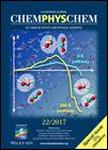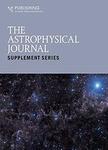版权所有:内蒙古大学图书馆 技术提供:维普资讯• 智图
内蒙古自治区呼和浩特市赛罕区大学西街235号 邮编: 010021


In this study, we build multiple data sets based on magnetograms provided by the Solar Dynamics Observatory (SDO)/SHARP, SDO/Helioseismic and Magnetic Imager, and the Full-disk vector Magnetograph (FMG) on board the Advanced Space-based Solar Observatory (ASO-S) for ≥M-class flare prediction within 24 hr. We compare the performance of four models for flare forecasting, including a convolutional neural network (CNN), CNN-BiLSTM, vision transformer (ViT), and MViT. We study the impact of magnetograms with single, multiple, and mixed active regions (ARs) on model performance. Furthermore, we investigate the generalization capability of the models by using multisource data collected within the same period, as well as single-source data gathered across different periods. This is the first time that we utilize ASO-S/FMG data for flare forecasting. Finally, we fairly compare the forecasting performance of the MViT model with that of NASA/CCMC under the same prediction time and AR number. The main results are as follows. (1) Transformer-based models outperform CNN-based models, while spatiotemporal models significantly surpass nonspatiotemporal models. (2) The inclusion of a magnetogram with multiple ARs diminishes the forecasting performance of the models, whereas the use of magnetogram data with a single AR for flare prediction yields superior results compared to data with multiple ARs. (3) The MViT model reaches a true skill score of 0.707 when utilizing the FMG data with a single AR, achieving exceptional performance for solar flare forecasting. (4) The MViT model demonstrates better generalization ability across both single-source data and multisource data. (5) The MViT model demonstrates a performance comparable to current state-of-the-art methods (i.e., NASA/CCMC) in flare prediction.
电话和邮箱必须正确填写,我们会与您联系确认。
版权所有:内蒙古大学图书馆 技术提供:维普资讯• 智图
内蒙古自治区呼和浩特市赛罕区大学西街235号 邮编: 010021

暂无评论